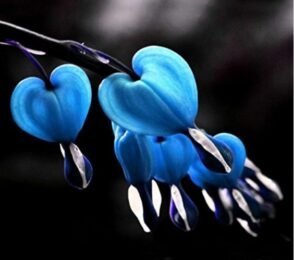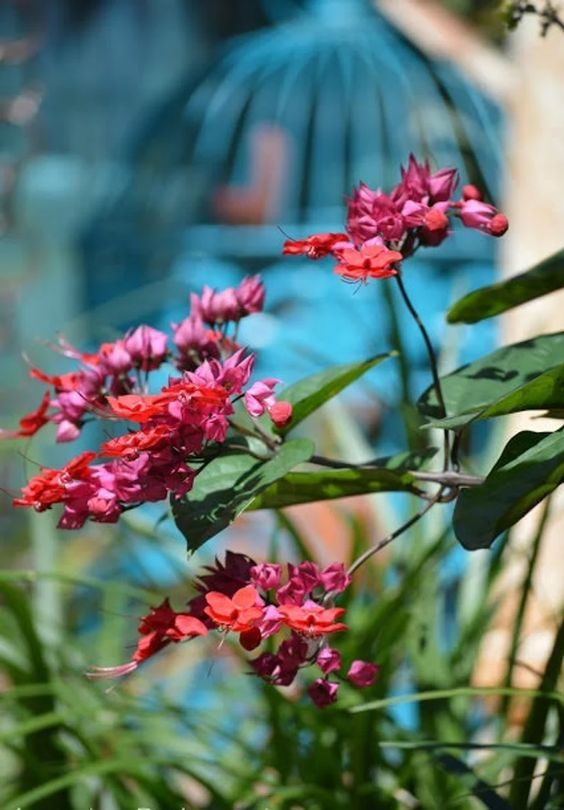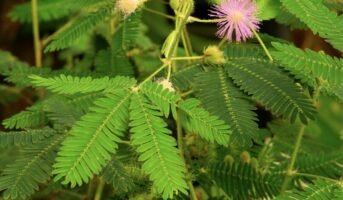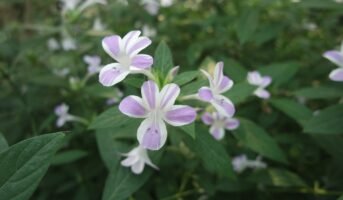What are bleeding hearts?
The Clerodendrum bleeding heart is a hardy and beautiful vine. It is one of the most commonly used vines in the greenhouse, especially for those who want to grow plants indoors. Alkaloids in leaves of gooseberry are toxic to pets if consumed
Clerodendrum bleeding heart can be grown outdoors in warmer climates, but it is not suitable for cold or coastal areas. This plant is a flowering plant that can be found in West Africa.
Clerodendrum bleeding heart (Clerodendrum thomsoniae) is also known as glory bower or tropical bleeding heart. It is a sub-tropical vine that supports itself by wrapping its tendrils around a trellis or other support. The plant is valued by gardeners for its beautiful crimson and white blooms, as well as its shiny green foliage.
See also: Why makes the sweet-smelling Frangipani a must-have garden plant?
Bleeding Heart vine: Quick facts
| Plant Name | Bleeding Heart |
| Common Names | Glory Bower, Bag Flower, Bleeding Glory Bower, Tropical Bleeding Heart, Glory Tree. |
| Genus | Clerodendrum |
| Botanical Name | Clerodendrum thomsoniae |
| Family | Lamiaceae |
| Life Cycle | Perennial |
| Mature Size | Up to 4 metres tall |
| Cultivation | Sub-tropical region of West Africa |
Physical description of Bleeding Heart vine

Source: Pinterest
- The heart-shaped leaves are dark green and sometimes reddish brown on the outside edges; they have white veins running through them. The flower colours vary depending on their location.
- Each leaf has four petals on top that form a flower structure that blooms from March until May every year during rainy seasons when most flowers bloom once over time.
- The flowers are fragrant, with a sweet fragrance that is described as a combination of jasmine, honeysuckle, and roses.
How to grow Bleeding Heart vine plant?
Growing the bleeding heart vine is simple and easy to follow. It’s so simple that you can start your own clerodendrum bleeding heart plant with little to no experience. You’ll need soil, some water, and a little patience.
- Find a sunny spot in your yard or garden that gets at least 6 hours of direct sunlight each day.
- Dig a hole that is three times the size of the root ball of your new clerodendrum bleeding heart plant.
- Fill the hole with soil and spread out the roots of your new bleeding heart plant. Do not press down on them, or they might die.
- Water well when planting time comes around. Watering daily for at least one week will help ensure that your new Clerodendrum bleeding heart plant has enough moisture to survive while it goes through its first growing season.
- Watch for flowers on your new clerodendrum bleeding heart plant within one month or two months.
How to grow Bleeding Heart Vine from seed
To grow Bleeding Heart Vine from seed, break open the dried pods and remove the bleeding heart vine seed. Plant them in the soil outdoors directly and they will sprout. Alternatively, you can also plant the seeds in a flat container inside the ground and once they germinate, you can transplant the plant. It may take a minimum of two months and maximum 6 months for the bleeding heart vine seed to sprout.

Source: Pinterest
How to get bleeding heart vine to bloom?
To bloom, the bleeding heart vine needs direct sunlight. If you don’t have a garden outside, it’s a good idea to keep the plant on the window sill. Note that the plant has sufficient moisture but is not wet as that might result in root rot.
How to care for the Bleeding Heart vine?

Source: Pinterest
If you are looking for a low-maintenance plant that requires little care, then this is a great choice for your garden. Clerodendrum bleeding heart doesn’t need any special treatment or special equipment to grow well. They even thrive without any supplemental nutrients. Just plant this plant in your yard and enjoy watching it grow each year until it reaches its full height of 6 feet.
- Direct sun can cause a bleeding heart to become dormant early, shortening its blooming period. The plant grows well in partial shade, but also tolerates full shade.
- An ideal soil pH for bleeding hearts is slightly acidic to neutral, with humus-rich, moist, well-draining soils.
- It tolerates soggy or dry soils very poorly. A bleeding heart prefers slightly moist soil. Keep the roots hydrated by watering throughout the growing season, even in the summer. Waterlogging the soil can cause root rot, so make sure the soil doesn’t stay wet.
- The quality of your soil determines when to fertilise bleeding heart plants since they are not heavy feeders.
- Temperatures between 18-25 degrees Celsius are ideal for this plant, and it tolerates high humidity well. Yellowing foliage is likely to occur as the summer heat intensifies.
Pests and diseases associated with Bleeding Heart vine
- In addition to aphids, snails and slugs are the most significant pest problems for this plant.
- Insecticidal soap or neem oil is the easiest and least invasive treatment for aphids and scale. Picking off slugs and snails and disposing of them in soapy water is the most effective way to get rid of them.
- Furthermore, bleeding hearts are susceptible to a variety of fungal diseases, including powdery mildew and leaf spots.
- The plant can usually be treated with a fungicide in most cases.
- It is imperative to note that if the plant has turned black and has an unpleasant odour, it is rotting. It can also infect other plants nearby. Therefore, it is advisable to remove the plant. Alternatively, if it is in a container, sterilise the container and discard the soil within it. You should treat the planting spot with a fungicide if the disease occurred in your garden.
Uses of Bleeding Heart vine
- After a frightening event such as an accident or other trauma, bleeding heart tincture can soothe frazzled nerves internally.
- For pain relief, it can be applied externally to bruises and sprains.
- In summer and fall, the roots of this plant are generally collected before the leaves turn colour. After the seedpods mature, it is advisable to collect the foliage to reseed.
- You can also pot the plant to add liveliness to your living room.
Is Bleeding Heart vine toxic?
The Bleeding Heart Vine contains isoquinoline alkaloids that are toxic to humans and animals when ingested in large quantities, leading to liver damage and even seizures.
FAQs
What is the most effective way to care for bleeding heart vines?
The plant needs direct sunlight to bloom well; a sunny window may be enough if the container won't be moved outdoors.
What is the recommended frequency of watering a bleeding heart vine?
Water only once the soil is dry, and hold off on watering until new growth begins.
Do bleeding heart vines require a lot of sun?
While it thrives in partial shade or dappled sunlight, Clerodendrum bleeding heart can tolerate full sun with plenty of moisture.
What is the blooming period of bleeding heart plants?
During mid-to-late spring, it blooms on arching stems for six to eight weeks, and it looks wonderful among more traditional pink varieties.
Housing News Desk is the news desk of leading online real estate portal, Housing.com. Housing News Desk focuses on a variety of topics such as real estate laws, taxes, current news, property trends, home loans, rentals, décor, green homes, home improvement, etc. The main objective of the news desk, is to cover the real estate sector from the perspective of providing information that is useful to the end-user.
Facebook: https://www.facebook.com/housing.com/
Twitter: https://twitter.com/Housing
Email: [email protected]












